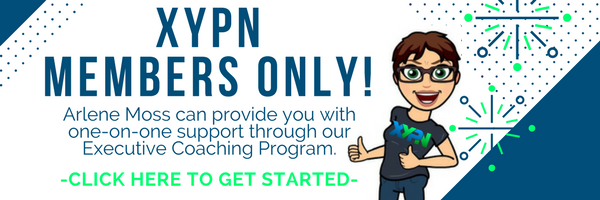Say No to My Way or the Highway - What Would Arlene Say?
Share this
.png?width=800&height=533&name=WWAS%20(4).png)
Don’t Be Stubborn – There’s Never One Right Answer
I hear many new advisors shake off advice that’s given to them. It’s always a bizarre thing for me to witness, but it happens. In some ways, I get it. When you pass your CFP exam, or when you hit a major milestone in your practice, or you sign “x” number of clients, it can feel like you know what you’re doing. I’m going to let you in on a little secret, though – nobody knows what they’re doing all the time. There are so many aspects to the financial planning profession that can be done in so many different ways. You have to find the best method for you and your practice. More than that, though, you must be willing to try new things to find what does work best for you.
There are a few primary areas in the financial planning profession that are most often debated. Regardless of how you currently do business, it never hurts to keep an open mind and hear what other folks are doing! You never know, you might find something that works better, gets you more clients, makes your life easier – who knows!
Fee Structure
One commonly debated piece of the financial planning puzzle is fee structure. Many financial advisors who have been in business for a while charge AUM fees. However, a newer method is a monthly fee structure (sometimes combined with an upfront planning cost or additional fee for investment management).
Some people bill monthly, some bill annually, some bill quarterly. There are practically endless opinions on what percentage fee is fair to charge for investment management. There are still more opinions out there on what you should be charging as a financial planning fee – specifically on how to charge what you’re worth and still charge your clients a rate that’s “sellable.” It’s a fine line to walk – and if you get bogged down in all the different options your head will start spinning.
At XYPN, we advocate for the monthly retainer model. It makes sense in a lot of ways – primarily because everything these days is billed monthly. Of course, that makes it easier for your clients to wrap their head around how they’ll pay you. But digging deeper, a monthly retainer model simplifies your invoicing process.
Select your fee structures to support how you want to serve your clients and support the style of business you want to create.
Engagement Structure
Oh boy. This is a big one with lots of opinions, as well. Many financial planners believe in a “one stop shop” approach. They offer financial planning and investment management. Others prefer one or the other. And there’s modular vs a full plan delivery option. Once again, there is no right answer here. You can run your practice however you want to run it. Part of that is deciding how you best engage with your clients and how you want to serve them.
Practice Management
This is a kind of all-encompassing part of your financial planning business. You might not even realize it, but you probably have some very strong opinions about how you run the show during the day-to-day. You have a specific CRM you love. You swear by one marketing tactic or another. You use specific tools to simplify your processes. You have hired a Virtual Assistant, Content Writer, or Business Coach, and you’ve never looked back! Of course, for every opinion you have, another (equally qualified and successful) advisor has a different opinion!
This is one of the areas where we as business owners tend to get a little bit full of ourselves. We’re so sure that we’re right, we forget that there are other ways of doing things. There are other tools to use. If someone recommends a tool to you, even if they’re determined that it’s the “right” one – it might not work for you. On the flip side, it might be the greatest thing since sliced bread and you’ll never look back once you incorporate it into your practice. That takes us into our next topic – when to listen to someone’s advice and when to smile and nod politely while doing your own thing.
When to Take Advice (and When Not To)
The first piece of advice I give to you is this – play nice. Whether you’re planning on taking someone’s advice to heart or you’re happy marching to the beat of your own drum, always be respectful and kind. When someone shares their approach with you, they’re doing so because they care. They care about their practice, and they care about your practice. They want to see you be successful! Even if you don’t agree with their method, being rude and shutting down the conversation won’t positively impact you or them. Always remember that you are both professionals.
Knowing when to take someone’s advice (or when not to) is a very individual thing. It’s also very situational. However, we can boil it down to a few key guidelines for you to stick to.
- If someone is recommending that you use a tool that you’ve already tested and hated, it’s okay to ignore their advice. Even if they are speaking its praises for hours on end. If you know you don’t like something and you know that it doesn’t work for your business, you don’t need to use it.
- If someone is arguing. Some topics, like fee structure, fee-only v. fee-based, or engagement structure can result in a heated discussion. If you disagree with someone on one of these topics and they can’t hold an even-tempered discussion, it’s okay to walk away or politely agree to disagree.
- If you haven’t tried a new tool or researched the subject someone is trying to discuss with you, keep an open mind. You may research it further and decide it’s not for you – but it pays to be open to new things! You might find that what they’re recommending could benefit you, your business, your clients or other advisors! Even if you don’t use it, passing on the info can help others.We all rely on each other to find success!
Implementing Someone Else’s Advice
So, what do you do when someone convinces you to take their advice? There are steps that you can follow to ensure you do what’s best for your business and avoid getting frozen while trying to make a big (or small) change.
Step 1: Don’t Overthink Your Decision
If you decide to try something new, don’t overthink your decision. There is only so much research and so many pro and con charts that will help you. If you feel confident about your choice, move forward with an implementation plan.
Step 2: Set a Timeline for You to Decide
Not so confident that this is the right move for you and your business? That’s okay! But you can’t sit on the decision for forever. You won’t make any progress with your business if you’re unable to embrace change! Set a timeline for yourself, and make it reasonable based on the decision you’re making. If you’re debating changing your fee structure you might need more time to think on that than if you’re debating whether to hire a Virtual Assistant to outsource your email admin and scheduling. Once you set a deadline for yourself, move forward with confidence.
Step 3: Bite Off What You Can Chew
Don’t fall prey to the “shiny new toy” syndrome – where you move from one new tool to the next and are constantly making changes in your business. You’ll never truly be able to track whether a new tool or a new method of working is positively impacting your business if you are constantly changing things and signing up for 10 new products a week.
Step 4: Evaluate and Adjust
When you make changes in your business, you need to evaluate whether they’re working. Set a timeline that makes sense, and evaluate positive or negative change at the end of that timeline. Track website traffic for six months if you sign up for a new marketing tool. Test a new engagement structure for a year to see if it works for you and your clients. You can always adjust if things aren’t working, or carry on happily if they are.
Running a business is hard, and if you find something that works it’s easy to stick with it. But the key in running a long-lasting, successful business is knowing when to change and when you’ve already got a good thing going. It is an ongoing balancing act. Most importantly, if you’re ever trying to make a big decision, know that you’re not alone. Reach out to coaches, colleagues, master-mind group or study group members, and get some opinions. There will certainly be plenty of those – and they’ll likely be helpful when they come from people who care about you and want to see your business succeed!
 About Arlene Moss, Executive Coach
About Arlene Moss, Executive Coach
Arlene gets a kick out of helping financial advisors get over being overwhelmed and take on their frustrations so their businesses soar. Arlene works to ensure XYPN members are able to help their clients prosper while creating a sustainable business model. Through XYPN Academy and one-on-one coaching, members get the support they need to grow their businesses and overcome the challenges that come their way.
Share this
- Fee-only advisor (381)
- Advice (305)
- Business Development (248)
- Independent Financial Advisor (203)
- Growing Your Firm (161)
- Marketing (133)
- Financial Planning (129)
- What Would Arlene Say (WWAS) (81)
- Business Coach (80)
- Firm Ownership (78)
- Training (75)
- Compliance (72)
- Business (69)
- Building Your Firm (65)
- Financial Advisors (63)
- Online Marketing (61)
- Events (59)
- Starting a Firm (52)
- Staffing & HR (49)
- Technology (49)
- From XYPN Members (48)
- Launching a firm (46)
- Advisors (41)
- Entrepreneurship (38)
- Taxes (37)
- Networking & Community (33)
- Interviews and Case Studies (32)
- Investment Management (31)
- Sales (27)
- Social Responsibility (27)
- Tax Preparation (27)
- XYPN Invest (26)
- Business Owner (25)
- Small Business Owner (20)
- Financial Management & Investment (19)
- Industry Trends & Insights (19)
- Financial Education (17)
- Financial Planners (17)
- Independent Financial Planner (17)
- Tech Stack (17)
- XYPN (17)
- Leadership & Vision (16)
- Investing (15)
- Niche (15)
- How to be a Financial Advisor (14)
- NextGen (14)
- RIA (14)
- Media (13)
- Preparing to Launch (13)
- Press Mentions (13)
- RIA Operations (12)
- RIA Owner (12)
- XYPN Membership (12)
- Assets Under Management (AUM) (11)
- First Year (11)
- Goals (11)
- Scaling (10)
- Advisor Success (9)
- Building Your Firm (8)
- Communication (8)
- Lessons (8)
- Study Group (8)
- Time Management (8)
- Virtual Advisor (8)
- Behavioral Finance (7)
- Growth (7)
- Pricing Models (7)
- From Our Advisors (6)
- Independent RIA (6)
- Money Management (6)
- Motivation (6)
- Processes (6)
- Automation (5)
- Broker-Dealers (5)
- College Planning (5)
- Filing Status (5)
- How I Did It series (5)
- Investment Planner (5)
- Mental Health (5)
- Michael Kitces (5)
- Preparing to Launch (5)
- RIA Operations (5)
- Retirement (5)
- Risk and Investing (5)
- S Corpration (5)
- Support System (5)
- TAMP (5)
- Wealth (5)
- Year-End (5)
- Client Services (4)
- Outsourcing (4)
- Selling a Firm (4)
- Succession Plans (4)
- Benchmarking Study (3)
- Budgeting (3)
- Career Changers (3)
- Engagement (3)
- Fiduciary (3)
- Getting Leads (3)
- Membership (3)
- Millennials (3)
- Monthly Retainer Model (3)
- Partnership (3)
- Pricing (3)
- Recordkeeping (3)
- Risk Assessment (3)
- Small Business (3)
- Staying Relevant (3)
- Work Life Balance (3)
- Advice-Only Planning (2)
- Bookkeeping (2)
- Charitable Donations (2)
- Client Acquisition (2)
- Differentiation (2)
- Health Care (2)
- IRA (2)
- Inflation (2)
- Productivity (2)
- Implementing (1)
Subscribe by email
You May Also Like
These Related Stories

The Ultimate Guide to Mentorship: What Would Arlene Say?

Are You Hiding From Fears? What Would Arlene Say?




